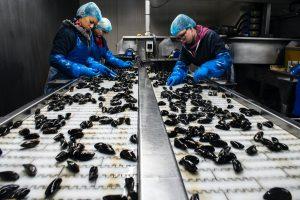A good obsolescence plan can keep your plant up and running
Unplanned downtime is a manufacturer’s worst nightmare. The nightmare worsens if goods on the idle production line are perishable food and beverages, as too much of a delay can lead to product losses.
Manufacturing lines are complex systems made of thousands of parts, each doing their own important job. If one part fails, this has a cascading effect up and down the production line, to the extent that production may come to a complete halt.
When this occurs, there are two options: perform a repair on the broken part, or replace or upgrade the entire system.
While system upgrades have their own merits, they are expensive and entail large windows of undesirable, costly downtime while old systems are removed and new ones are installed and commissioned.
The alternative approach is to replace the broken part, which sounds simple and should be much quicker than replacing the entire system.
However, if the offending part turns out to be obsolete — that is, no longer manufactured by the original equipment manufacturer (OEM) — then a quick task suddenly becomes more difficult.
This is because quality obsolete parts are notoriously difficult to source so, if manufacturers are not prepared in advance, they may find themselves having to shut down production for much longer than initially anticipated.
Furthermore, if corners are cut to find cheaper replacements, or if parts are bought simply because they were the easiest to find, manufacturers are liable to incur repeated downtime as lower-quality parts are likely to fail again, and quickly.
As industrial systems typically have long lifespans, they are especially susceptible to broken parts, and are more likely to contain obsolete parts. That is why it’s important to have a comprehensive obsolescence plan in place.
Obsolescence audit
An effective obsolescence plan should involve a full systems audit, to identify parts that may pose a future downtime risk. This includes identifying all parts in the system that are obsolete, as well as parts that pose the highest risk of breaking.
Parts more likely to break are those that are more susceptible to wear and tear. This includes parts subjected to harsh conditions including high levels of friction, heat or chemical corrosion.
Take the food and beverage industry, for example. Parts subjected to friction and heat include mechanical processing equipment like mills and grinders, as well as the ubiquitous motors, drive chains and drive belts that drive them. It also applies to other parts of the production line like conventional conveyer systems.
The problems don’t stop at packaging, either. For example, flow wrapping poses risks of wear and tear on parts such as fin wheels, sealing jaws and rotary heat sealers.
All are subjected to high heat that, in turn, increases the chance of corrosion.
Some components fall into both categories, which means a component carries a higher risk of breaking and is also obsolete. These parts should be shortlisted, so contingencies can be put in place for if the worst should occur. This can include pre-emptive finding and purchasing of replacements for these high risk parts, or more frequent maintenance for certain areas of a system.


